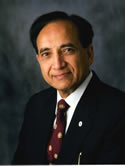Analysis of prognostic factors in 146 patients with anterior skull base sarcoma: An international collaborative study Journal Article
| Authors: | Gil, Z.; Patel, S. G.; Singh, B.; Cantu, G.; Fliss, D. M.; Kowalski, L. P.; Kraus, D. H.; Snyderman, C.; Shah, J. P. |
| Article Title: | Analysis of prognostic factors in 146 patients with anterior skull base sarcoma: An international collaborative study |
| Abstract: | BACKGROUND. Single-institutional studies lack sufficient power to assess the role of surgery and radiotherapy in the management of sarcomas involving the anterior skull base. For this study, an international collaborative study group analyzed a large cohort of patients who underwent surgery for the treatment of skull base tumors. METHODS. A subset of 146 patients who had a histologic diagnosis of skull base sarcoma (SBS) formed the basis of this report. Most patients were aged ≥21 years (77%) and had stage IV disease (56%). Adjuvant radiotherapy was received by 35% of patients, and chemotherapy was received by 10% of patients. RESULTS. Orbital involvement was encountered in 53% of patients, involvement of the orbital wall was encountered in 46% of patients, and intracranial extension was encountered in 28% of patients. Positive microscopic margins were reported in 43% of patients (51 of 118 patients). Treatment-related complications were reported in 27% of patients, and postoperative mortality was reported in 1.4% of patients. With a median follow-up of 34 months, the 5-year overall, disease-specific, and recurrence-free survival rates were 62%, 64%, and 57%, respectively. Tumor grade and adjuvant radiotherapy were not significant predictors of survival. Prior radiotherapy, intraorbital extension, positive margins, and postoperative complications were significant predictors of reduced disease-specific survival on univariate analysis. The presence of positive/close margins, however, was the only independent predictor of poor overall, recurrence-free, and disease-specific survival on multivariate analysis (relative risk, 2.4; P = .006). The 5-year disease-specific survival rate was 77%, 43%, and 36% for patients with negative, close, and positive margins, respectively. CONCLUSIONS. The current results indicated that wide craniofacial resection with negative margins is an independent prognostic predictor of better outcome. Patients with positive margins have a high risk for tumor recurrence independent of tumor grade. © 2007 American Cancer Society. |
| Keywords: | adolescent; adult; cancer survival; child; preschool child; school child; treatment outcome; aged; child, preschool; middle aged; survival analysis; survival rate; major clinical study; overall survival; adjuvant therapy; disease free survival; combined modality therapy; cancer staging; follow up; follow-up studies; antineoplastic agent; cancer grading; cohort studies; tumor volume; cohort analysis; risk factor; histology; high risk patient; sarcoma; postoperative complication; kaplan-meiers estimate; postoperative complications; survival time; infant; tumor recurrence; adjuvant chemotherapy; surgical mortality; multivariate analysis; neck; skull base; skull base neoplasms; univariate analysis; craniofacial surgery; skull cancer; head; craniofacial resection; orbit; orbital cortex; soft tissue tumors; international collaborative study |
| Journal Title: | Cancer |
| Volume: | 110 |
| Issue: | 5 |
| ISSN: | 0008-543X |
| Publisher: | Wiley Blackwell |
| Date Published: | 2007-09-01 |
| Start Page: | 1033 |
| End Page: | 1041 |
| Language: | English |
| DOI: | 10.1002/cncr.22882 |
| PUBMED: | 17614334 |
| PROVIDER: | scopus |
| DOI/URL: | |
| Notes: | --- - "Cited By (since 1996): 15" - "Export Date: 17 November 2011" - "CODEN: CANCA" - "Source: Scopus" |
Altmetric
Citation Impact
BMJ Impact Analytics
Related MSK Work







